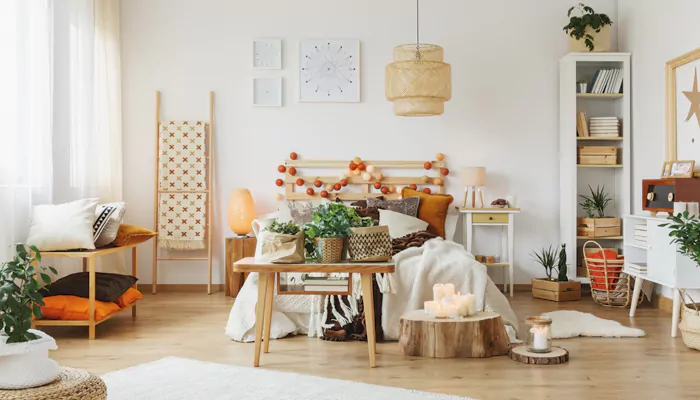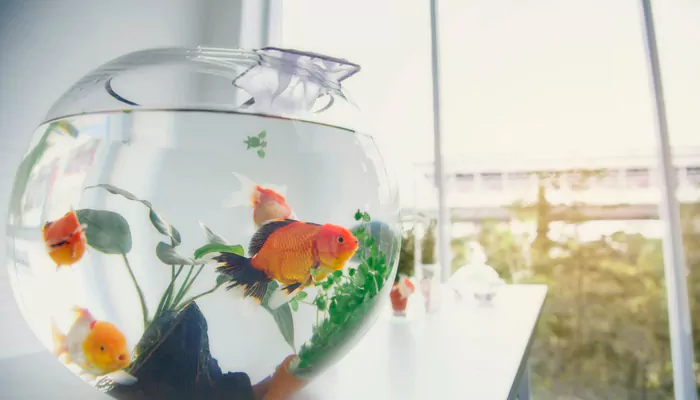
Incorporating elements of nature into interior spaces, a practice known as biophilic design, has become increasingly popular for its potential to enhance well-being.
This design philosophy is rooted in the idea that humans have an innate connection to nature and that bringing the outdoors inside can improve physical and emotional health, boost mood, and enhance productivity. Here are several strategies for integrating natural elements into your living or working spaces to create a more harmonious and health-enhancing environment.
Natural light not only reduces the need for artificial lighting but also helps regulate our circadian rhythms, improving sleep quality and overall mood. To maximize natural light in your space:
Use sheer curtains or shades to allow more light in while providing privacy.
Place mirrors strategically to reflect light into darker corners.
Consider skylights or solar tubes for areas away from windows.
Indoor plants are perhaps the easiest and most effective way to bring nature indoors. They improve air quality by absorbing toxins and emitting oxygen, and they can also reduce stress levels. Consider these tips:
Choose a variety of plants that thrive in indoor conditions, such as snake plants, peace lilies, or ferns.
Create a living wall or indoor garden for a dramatic effect.
Remember to consider the light requirements of each plant to ensure they thrive.
Incorporating materials that mimic those found in nature can evoke a sense of the outdoors. This can be achieved through:
Furniture and decorations made from natural wood, stone, or bamboo.
Using natural fibres such as cotton, wool, or jute for rugs, curtains, and upholstery.
Selecting wallpapers or tiles with patterns inspired by natural textures or landscapes.

The sound of water can have a calming effect, reducing stress and promoting relaxation. Consider adding:
Small table-top fountains in living or working spaces.
Wall-mounted water features for a more dramatic impact.
Aquariums, which combine the benefits of water features with the visual interest of aquatic life.
Colours found in nature can have a profound impact on our mood and well-being. To incorporate natural hues into your interior:
Choose paint, furnishings, and decorations in earth tones, greens, blues, and browns.
Add accents in brighter natural colours like flower-inspired reds, oranges, or yellows for energy and vibrancy.
Use colour psychology to create the desired atmosphere in each room.
Integrating organic shapes and patterns can mimic the randomness and complexity of nature:
Select furniture or decorations with organic, irregular shapes.
Use patterns inspired by foliage, flowers, or landscapes in wallpapers, textiles, and art.
Incorporate natural elements in their raw form, such as branches, rocks, or shells, as decorative pieces.
Engaging multiple senses can enhance the connection to nature:
Use essential oils or naturally scented candles to bring outdoor scents indoors.
Incorporate textures that remind you of nature, such as smooth pebbles in a bathroom or a wool throw in the living room.
Play nature sounds or ambient music to create a calming background noise.
If you have the luxury of a view, make the most of it:
Arrange furniture to face windows with outdoor views.
Use glass doors or large windows to blur the boundaries between indoors and outdoors.
Landscape the visible outdoor areas with eye-catching plants or features to enhance the view.
Incorporating nature into our living and working spaces not only enhances their aesthetic appeal but also contributes significantly to our physical and psychological well-being. By adopting some or all of these strategies, you can create a more healthful and harmonious environment that nurtures your connection to the natural world. Remember, the goal of biophilic design is not just to decorate with plants or use natural materials but to create spaces that truly connect the inhabitants with nature, fostering a deep, intrinsic relationship that benefits both humans and the environment.